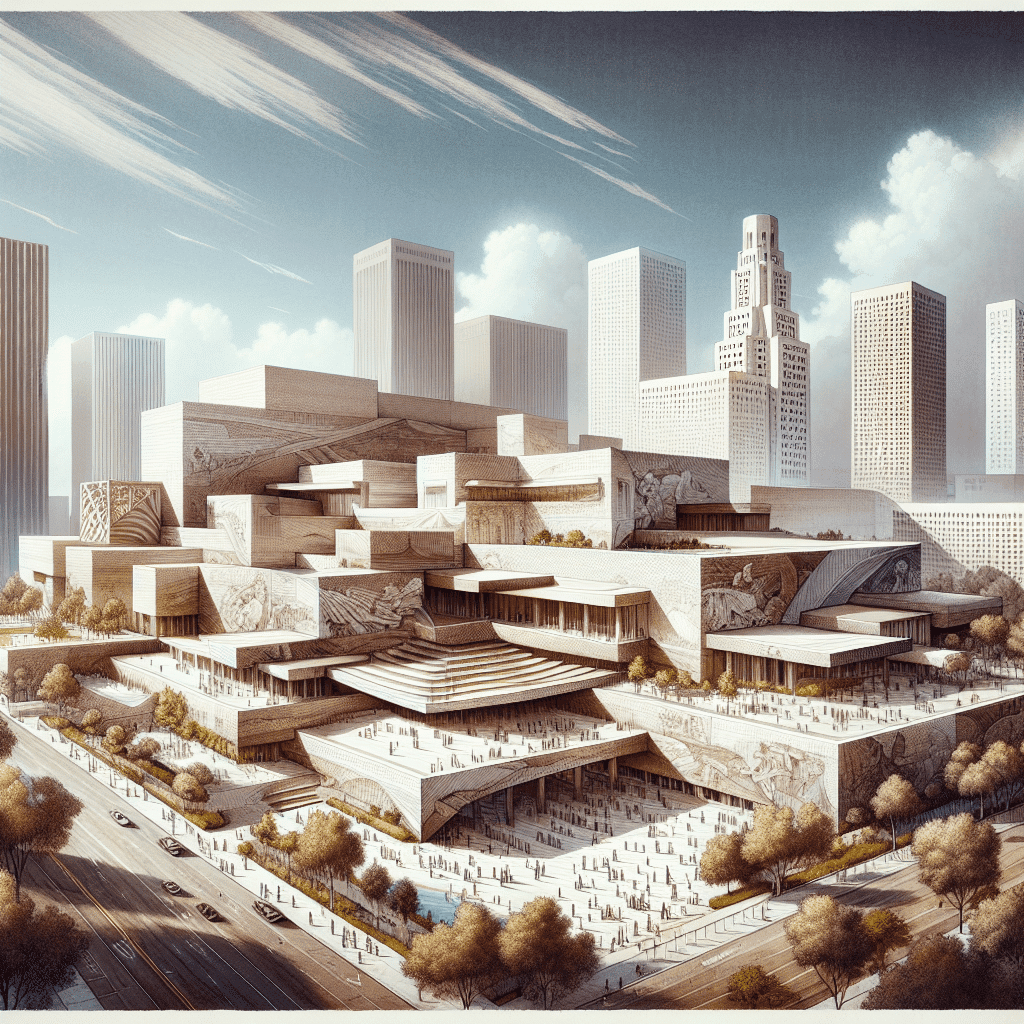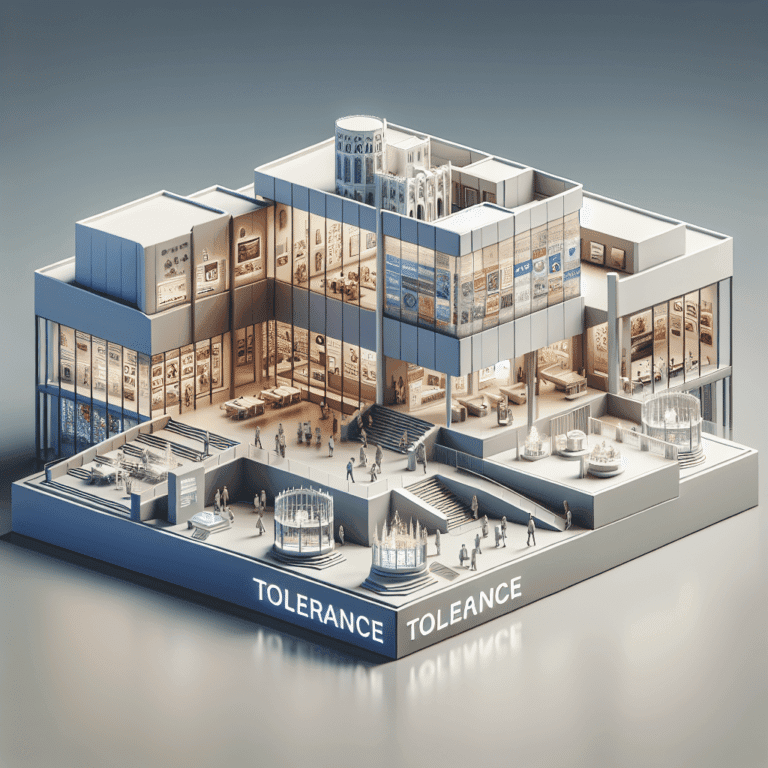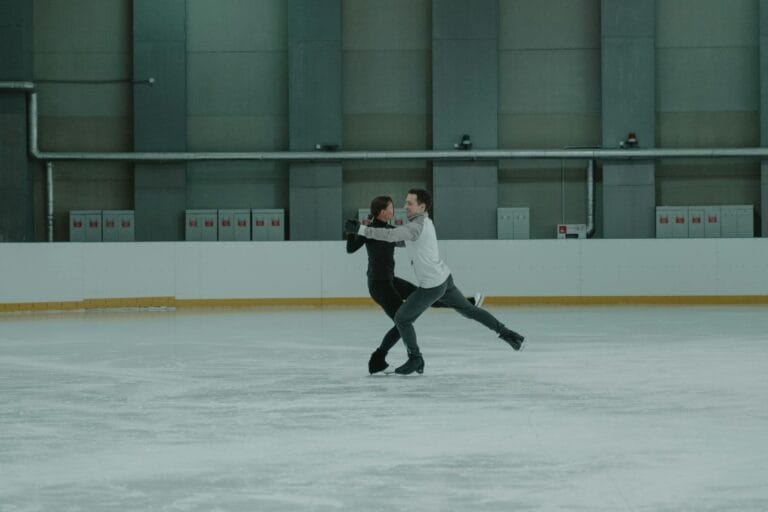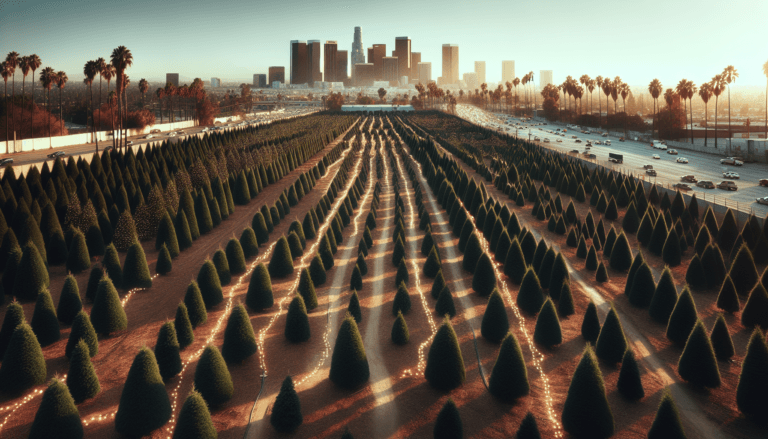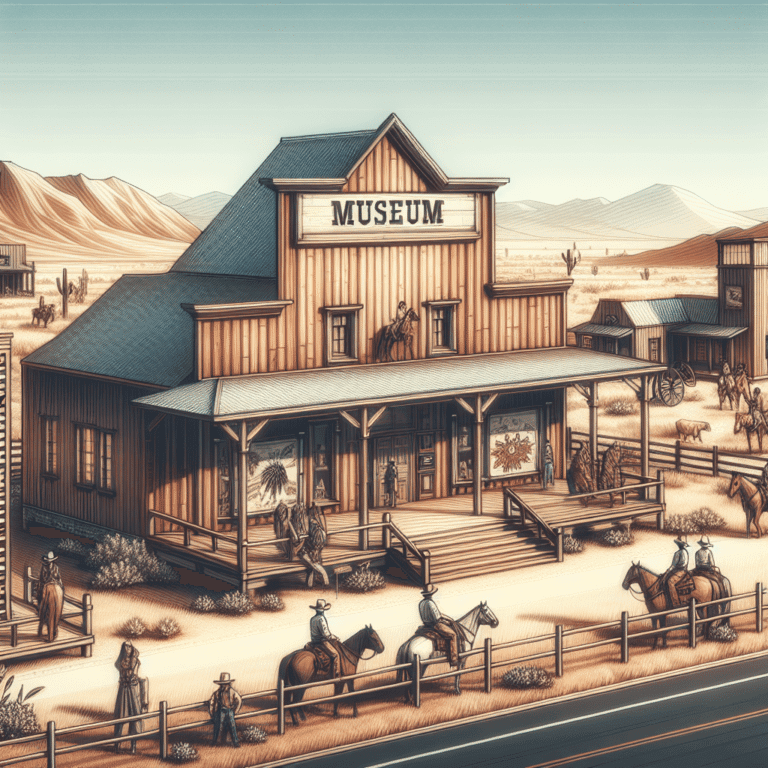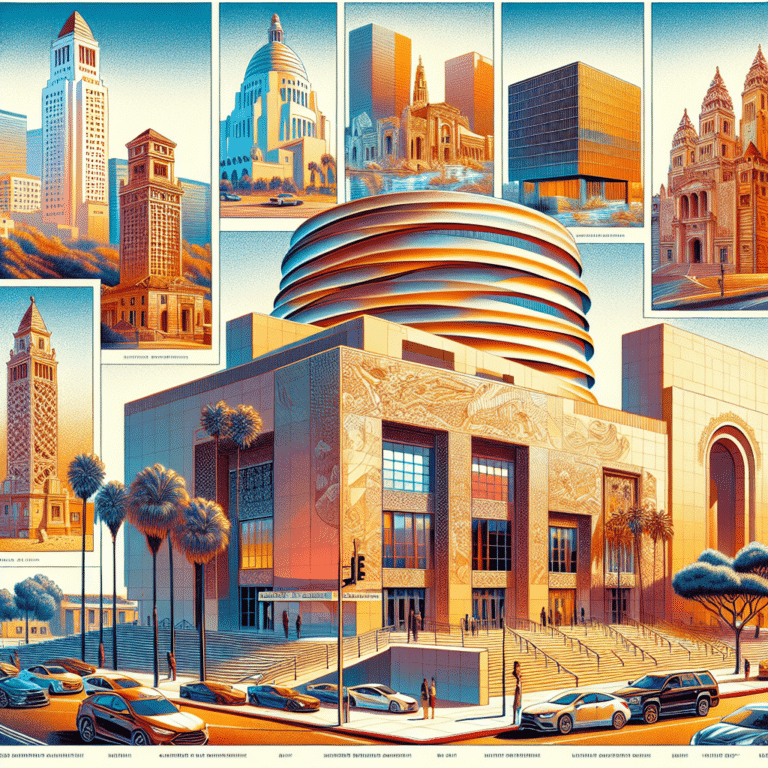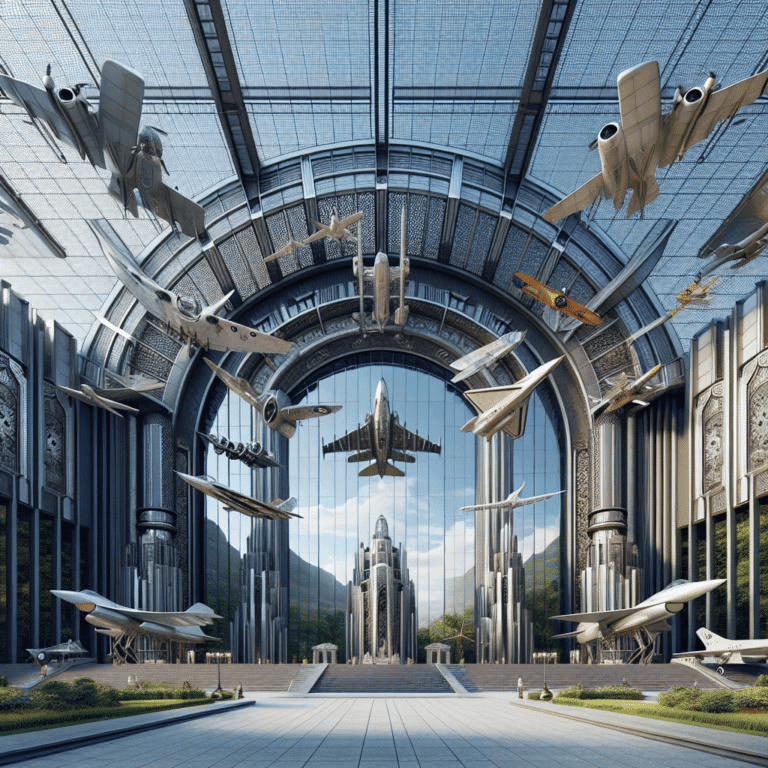My Art Adventure: Exploring the Marvels of Los Angeles County Museum of Art (LACMA)
Exploring LACMA
An Artistic Marvel
Visiting the Los Angeles County Museum of Art (LACMA) is like stepping into a treasure trove of creativity and history. Opened in 1965, LACMA is the largest museum in the western United States, boasting an impressive collection of over 100,000 works of art (Culture Trip). Each piece tells a unique story, showcasing the evolution of art across various cultures and time periods.
One of the most iconic installations at LACMA is “Urban Light” by Chris Burden, which features 202 restored street lamps from the 1920s and 1930s. This installation has become a symbol of both the museum and the city itself, providing a stunning visual experience as the solar-powered lights illuminate the area every night. It’s a perfect spot for photos and to soak in the artistic ambiance of Los Angeles.
Must-See Artworks
When I explore LACMA, there are several must-see artworks that I always make a point to visit. Here are a few highlights:
| Artwork | Artist | Description |
|---|---|---|
| “Flower Day (Dĩa de Flores)” | Diego Rivera | This 1925 painting showcases a unique aerial perspective of calla lilies, demonstrating Rivera’s cubist influence and mastery of form. (Culture Trip) |
| “Urban Light” | Chris Burden | A large-scale installation made up of 202 restored street lamps, creating a mesmerizing artistic landmark. (Discover Los Angeles) |
| “Rain Room” | Random International | An immersive experience where visitors walk through a rain-like environment that pauses wherever a human body is detected, allowing for a unique interaction with water. (Discover Los Angeles) |
These artworks are not just pieces to observe; they invite interaction and provoke thought. Each visit feels like a new adventure, revealing layers of meaning and inspiration. If you’re interested in exploring other fantastic museums in Los Angeles, check out our list of the best los angeles museums.
Unique Art Installations
Visiting the Los Angeles County Museum of Art (LACMA) is an exhilarating experience, especially when exploring its unique art installations. Two of the standout pieces that I couldn’t help but marvel at are “Urban Light” by Chris Burden and the immersive “Rain Room” experience.
“Urban Light” by Chris Burden
One of the first installations that caught my eye was the magnificent “Urban Light.” Created in 2008 by artist Chris Burden, this stunning piece is located between Wilshire Boulevard and the entrance to LACMA. It consists of 202 restored street lamps from the 1920s and 1930s, transforming the outdoor space into a glowing spectacle. The solar-powered lights turn on every night, creating an enchanting atmosphere that is simply unforgettable. This installation has become synonymous with both the museum and Los Angeles, making it one of the city’s most photographed landmarks (Culture Trip, Discover Los Angeles).
| Feature | Details |
|---|---|
| Year Created | 2008 |
| Number of Lamps | 202 |
| Era of Lamps | 1920s-1930s |
| Power Source | Solar-powered |
Visiting “Urban Light” isn’t just about seeing art; it’s about experiencing the interplay of light and space. I found myself wandering through the rows of lamps, admiring their intricate designs and enjoying the warm glow they cast in the evening.
“Rain Room” Experience
The “Rain Room” is another installation that left me in awe. This innovative art piece allows visitors to walk through a downpour without getting wet. As I stepped into the space, the sound of rain created an immersive atmosphere, while sensors detected my movements, stopping the rain right above me. It was a surreal experience, blending art and technology seamlessly.
The “Rain Room” offers a unique opportunity to explore the relationship between nature and human experience. It encourages reflection on our interactions with the environment while providing a fun and playful atmosphere. This installation is a true testament to the creativity and imagination that thrives at LACMA.
For anyone looking for a fun outing that combines history and art, LACMA is a must-visit destination. Whether you’re viewing the nostalgic charm of “Urban Light” or experiencing the enchanting “Rain Room,” each moment spent at the museum is sure to be memorable. For more options, check out our guide on the best los angeles museums.
Diverse Collections at LACMA
Visiting the Los Angeles County Museum of Art (LACMA) is like stepping into a vibrant tapestry of artistic expressions. I was amazed by the range of collections that span various cultures and time periods.
Artistic Representations
LACMA boasts an impressive collection of over 135,000 objects, showcasing art from ancient times to the present. The museum’s collection represents a myriad of cultures, including Asian, Latin American, Islamic, and American art. This diversity allows me to experience art history from a global perspective. It’s thrilling to witness firsthand how artistic styles and techniques have evolved over centuries.
Here’s a snapshot of the artistic representations found at LACMA:
| Art Type | Number of Works |
|---|---|
| Asian Art | 15,000 |
| Latin American Art | 10,000 |
| Islamic Art | 7,000 |
| American Art | 20,000 |
| Modern Art | 18,000 |
| Contemporary Art | 15,000 |
| Other | 70,000 |
For those interested in modern movements, LACMA highlights developments throughout the 20th century, showcasing significant works from Abstract Expressionism, Pop Art, and Minimalism (LACMA). This makes it a perfect spot for both art aficionados and curious newcomers.
Cultural Variety
The cultural variety in LACMA’s collections is truly inspiring. I found it fascinating that the museum not only includes artworks but also highlights the historical context and significance behind each piece. This comprehensive approach enriches the viewing experience and deepens my appreciation for the diverse cultures represented.
LACMA’s commitment to fostering understanding and appreciation of art is evident through its diverse exhibitions and educational programs (LACMA). It feels like every corner of the museum tells a different story, making it a wonderful destination for individuals and families looking to explore art and history.
For more museum adventures, check out the Getty Center or the Broad for additional artistic experiences in Los Angeles.
LACMA’s Educational Offerings
Visiting the Los Angeles County Museum of Art (LACMA) is not just about seeing beautiful artworks; it’s also about engaging with them through various educational programs. I was thrilled to discover the immersive learning experiences that LACMA offers to visitors of all ages.
Engaging Programs
LACMA’s dedication to education shines through its wide range of programs that cater to different interests and age groups. They host film screenings, musical performances, and family activities, all designed to make art accessible and enjoyable. Each year, LACMA welcomes over a million visitors, and it’s no wonder why! These engaging programs allow me to dive deeper into the world of art and culture.
| Program Type | Description |
|---|---|
| Film Screenings | Curated films that relate to current exhibitions |
| Musical Performances | Live music events featuring various genres |
| Family Activities | Interactive sessions for kids and families |
For anyone interested in exploring these offerings, you can find more details on LACMA’s official site, where they outline all the upcoming events.
Artistic Exploration
I was particularly excited about the opportunities for artistic exploration at LACMA. The museum is committed to fostering a deep understanding and appreciation of modern art through its diverse exhibitions and educational programs. I found that LACMA provides a rich visual tapestry of modern art, offering an immersive experience into the creativity and innovation of renowned artists.
LACMA also offers free admission for children, teens, and accompanying adults, making art accessible to families. This commitment to education emphasizes not just the importance of viewing art, but also understanding its context and significance. Whether it’s through guided tours or hands-on workshops, LACMA ensures that every visitor can connect with art in a meaningful way.
If you’re looking for more museum options in Los Angeles, check out the best los angeles museums to plan your next adventure!
LACMA’s Campus
Architectural Highlights
Visiting the Los Angeles County Museum of Art (LACMA) is an experience like no other, not just for the art but also for the stunning architecture that surrounds it. The museum is located on Wilshire Boulevard in the Miracle Mile, which is home to several remarkable buildings. The BCAM (Broad Contemporary Art Museum) and the Resnick Pavilion are standout features that catch the eye. Each structure contributes to the overall aesthetic and functionality of the campus, making it a delightful place to explore.
| Building | Description |
|---|---|
| BCAM | Showcases contemporary art across multiple floors. |
| Resnick Pavilion | Focuses on modern and contemporary pieces, featuring rotating exhibitions. |
| Ray’s & Stark Bar | A stylish dining option with views of the outdoor installations. |
The architecture at LACMA is a blend of modern design and artistic expression, creating a vibrant atmosphere that enhances the visitor experience. I found myself captivated by the interplay of light and space within these buildings.
Outdoor Art Installations
One of the highlights of my visit to LACMA was the outdoor art installations that truly make the campus come alive. The most iconic of these is “Urban Light,” created by artist Chris Burden. This installation features 202 restored cast-iron streetlamps from the 1920s and 1930s, arranged in a stunning grid. It has become one of the most photographed landmarks in Los Angeles, and I couldn’t resist snapping a few pictures myself! (Discover Los Angeles)
Another amazing outdoor installation is the “Rain Room.” This immersive environment features continuously falling water that pauses wherever a human body is detected, allowing visitors to experience rain without getting wet (Discover Los Angeles). It was a unique experience, standing in a space where I could feel the ambiance of rain while staying completely dry.
LACMA’s outdoor art installations add an exciting dimension to the museum experience, making it the perfect destination for families or individuals looking to enjoy some history and creativity in Los Angeles. If you’re interested in exploring more museums in the area, consider checking out the best los angeles museums.
LACMA’s Historical Significance
Evolution of the Museum
The journey of the Los Angeles County Museum of Art (LACMA) is nothing short of fascinating. Established in 1961, LACMA began its life as a separate, art-focused institution, building upon the legacy of earlier art collections in Los Angeles. Over the years, it has transformed into the largest art museum in the western United States, boasting a collection that includes nearly 140,000 objects dating from ancient times to the present (Wikipedia).
The museum has undergone significant expansions and renovations, notably the creation of the Art of the Americas Building, the Broad Contemporary Art Museum, the Resnick Exhibition Pavilion, and the Lynda and Stewart Resnick Exhibition Plaza. These developments have enhanced the visitor experience and expanded the museum’s ability to showcase its diverse collections (LACMA).
| Year | Significant Event |
|---|---|
| 1961 | Establishment of LACMA as a separate institution |
| 2008 | Opening of the Broad Contemporary Art Museum |
| 2010 | Addition of the Resnick Exhibition Pavilion |
| 2020 | Launch of the Art of the Americas Building |
Iconic Structures
LACMA is not just a museum; it’s an architectural marvel. The campus features a stunning array of buildings, each with its own unique design and purpose. The most recognizable structure is perhaps the Broad Contemporary Art Museum, which showcases modern and contemporary works. The building’s sleek lines and expansive glass panels create a visually striking presence.
Another iconic feature is the Art of the Americas Building, which houses a diverse range of artworks from North, Central, and South America. Its design reflects the cultural richness of the collections housed within.
The museum’s layout encourages exploration and discovery, with each building connected by beautifully landscaped outdoor spaces. This creates an inviting atmosphere for visitors to wander and appreciate the art and architecture alike.
LACMA’s historical significance extends beyond its collections; it is a cultural landmark that continues to evolve and inspire. For those interested in exploring more museums in the area, check out our list of the best los angeles museums.
Future of LACMA
Peter Zumthor’s Design
I am incredibly excited about the future of the Los Angeles County Museum of Art (LACMA), especially with the new building designed by the renowned Pritzker Prize laureate Peter Zumthor. This innovative design has received unanimous approval from the L.A. County Board of Supervisors and promises to transform the museum experience. The proposed structure features an amoeba-shaped concrete form that will bridge Wilshire Boulevard to a parking lot across from the current site.
This new museum will consolidate galleries on a single floor, making it more accessible for visitors. The design also includes seven pavilions dedicated to various functions like education, retail, and dining, all supporting a stunning floating gallery space nearly 30 feet in the air. This ambitious project aims to replace four existing structures built in the 1960s and ’80s, which many felt were outdated and unpopular among the community (Architectural Record).
Proposed Changes
Along with the architectural transformation, the planned changes at LACMA intend to enhance the visitor experience significantly. The new design aims to create a more cohesive flow between galleries and public spaces, allowing for a more engaging exploration of art. This transformation aligns with LACMA’s commitment to accessibility and educational programming.
While some community members have expressed concerns over the demolition of the older structures, a group called the Citizens Brigade to Save LACMA has even initiated a competition for alternative designs to Zumthor’s proposal. Despite this, the vision for the future of LACMA seems firmly focused on innovation and community engagement, promising a vibrant and inclusive atmosphere for all visitors.
With these exciting changes on the horizon, LACMA is poised to become an even more significant cultural landmark in Los Angeles. For anyone interested in exploring other fantastic art institutions in the area, be sure to check out the Getty Center, The Broad, and the Natural History Museum of Los Angeles County.

